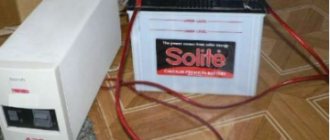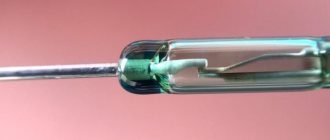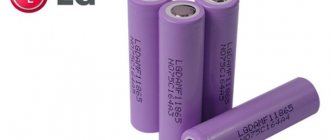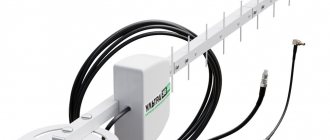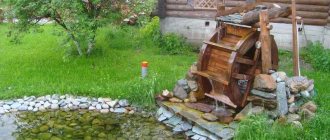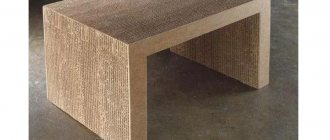Homemade crocheter
4 minutes Author: Yuri Polyakov 2
The ongoing debate about the use of the hook among domestic fishermen does not prevent home-made people from improving the design of the tool. Moreover, making such a device will not be difficult for a person more or less familiar with manual labor.
Making a crochet stitch with your own hands is not at all difficult; the Italian design is most often taken as a basis. You can read a description of this tool and how to properly tie a fishing hook with it in this article.
How to make a fishing hook? How to sharpen fishing hooks?
Most modern fishermen have long since stopped asking the question of how to make a hook - why waste time on homemade products of dubious quality when any fishing store offers an assortment to suit every taste and budget? Even in the best case, homemade hooks will be superior in quality to only the cheapest Chinese ones. It is simply impossible to reach the level of the best Japanese (“Decoy”, “Gamakatsu”, “OWNER”) or English (“Preston”, “Drennan”, and others) manufacturers at home. Do-it-yourself fishing hooks are most often made by those fishermen for whom this is another hobby, as well as by those who, due to the specificity of their favorite fishing method, find it difficult to find suitable products even among the huge variety in fishing stores. Other fishermen are primarily interested in sharpening hooks, and not making them.
Manufacturing
Homemade hooker can be made from metal or wood. Their principle is the same, it’s just that different craftsmen prefer their favorite materials. There is no need to describe the technologies separately; they are similar. The nuances and details of production will be indicated in the text.
First you need to prepare a drawing or manufacturing diagram, as in the figure below.
You can also use a photo of a hooker from the Internet, but the dimensions are usually not indicated there, as in the diagram.
To make a tool, you can take several types of materials as a basis:
The length of any material should be approximately 90-100 millimeters.
We fold the flat pieces and fasten them together with a pair of bolts or screws. In the round sticks, approximately in the middle or with a slight offset towards one of the ends, we drill a hole, to which we make a cut from the long side.
At the working end of the future hook, you need to make three holes in increments of one centimeter.
Two of them should be slightly thicker in diameter than the future wire staple. The third will be used to install the screw that secures the hook.
If the hooker is made of aluminum, then you will need to cut a thread in the hole from the top side, and expand the hole in the bottom half so that it is wider than the bolt used.
In a wooden structure, a hole is countersunk on the upper side for installing a nut, which is then strengthened with glue, the lower half is prepared, as in metal - a little more spacious than the thickness of the screw.
After preparing the holes, we equip them with a screw and a metal bracket with two pins protruding from the top. The front one, closest to the end, needs to be bent.
After installation is completed, you can complete the final design of the tool by grinding and coating with finishing materials:
Manufacturing of miniature offset hooks
In the summer, it is almost impossible to catch fish with a regular spinning rod. This is explained by the fact that in summer fish usually gather in places with an overgrown bottom or where there are snags. This is where the offset hook comes in handy. This type of hook has a curved shank, which reduces the likelihood of an unexpected snag.
Offset makers can be made from a regular crochet hook. Any hook with a long shank is suitable for this task. But you should select hooks that are made of high-quality steel. Such a hook will break when bent if it is released over a flame.
To prevent the entire structure of the hook from being released, it is best to grip it with pliers. We take the part that does not need “vacation” and hold it over the flame, for example, of a gas burner. It should be noted that the shank of the hook will never change its properties. At the end we get a strong hook, the strength of which is very high.
Source
Other options
Based on this basic diagram, we get exactly the crochet maker, who is comfortable tying hooks with both a ring and a spatula. However, on the Internet you can find a device that ties the fishing line directly to the ring. Moreover, this ring can belong not only to the hook, but also to the spoon, fly, swivel, and other fishing elements. Therefore, they can be generally called knotters. Such devices are used mainly by fans of fly fishing.
Such devices are easy to make by bending an elastic wire in a certain way and holding it in a handle. A comfortable handle for knotting is made from various available materials:
Although such tools are not crocheters in the literal sense of the word, you can also tie a hook with them, just the type and location of the knot will turn out to be a little different. Another feature of the wire knot is the large role of handwork and increased complexity when tying a hook or bait.
Source
Who and when will crochet stitch come in handy?
A fishing hook maker can help out in many situations. Let's look at each of them:
- When visual acuity decreases due to old age or in dim lighting.
- When fine motor skills of the fingers are impaired due to illness, old age or hypothermia of the hands from frost during winter fishing.
- In case you have to knit a large number of hooks at once, for example, when preparing leashes for the new fishing season.
- When using especially small hooks and thin lines.
At the same time, we do not encourage everyone to use hook ties; every angler should be able to tie hooks without the use of additional devices.
By the way! A crocheter can knit not only hooks, but also winter jigs.
Tying a jig using a hook tie
Fishing hooker: step-by-step instructions on how to tie a hook
If someone thinks that a fishing hook is superfluous in a fisherman’s equipment, then this will have to be refuted.
No, I completely agree that knowing fishing knots and knowing how to tie them are essential skills for an angler. However, circumstances may always arise to acquire an assistant. Physical data let us down or mutual “love” with small hooks. Doesn't matter. It's time. You can, of course, make crocheting with your own hands. However, I took the easier route. On Aliexpress.
I didn't see a lot of variety of products. On batteries, the mechanism immediately disappeared. You buy it, and then periodically “dive” into the store for batteries. And the simpler the design, the more reliable it is. I took a 3 in 1 set - hook and loop knitting and connecting the two ends of the lines (shock leader with the main one).
However, the reliability of the latter is questionable. I trust nodes that have been tested in practice. For example, this one.
Let me tell you, it’s an interesting thing, a fishing hook maker. There is nothing complicated in the design. As in use. Step-by-step instructions are included. Once you repeat it three or four times, everything gets stored in your head and hands. The reliability of the node has not yet given rise to doubt.
There’s nothing to shoot a video with yet, but photo manipulations are welcome. In a word, here is step-by-step instructions on how to use all the elements of the set.
Chemical sharpening of fishing hooks at home
For jigs you will need lead or lead-tin alloys and gypsum. You should prepare the jig in the fresh air or wearing a mask, as lead is toxic.
- Create a plaster mold. Pour plaster into a matchbox and place a jig in the middle.
- After the plaster has dried, the jig is removed. The mold is cleaned and channels are created for pouring tin.
The jig is the simplest bait that is very easy to make yourself. It is necessary to prepare plaster and mold.
- Price: $5.00
- Go to the store
Continuing the series of fishing reviews, let's move on to such a practical thing as a hooker.
I repeat - I often catch small fish with delicate gear, so tying leashes with size 16.18 hooks and 0.08 fishing line is a common thing) I usually do the preparation in the evening, before fishing, when my eyes can no longer see and my hands don’t obey, so tie a small hook to the thin line is a real torment. What can we say when suddenly while fishing you don’t have a leash of the required length with the required hook...
How to tie a fishing hook using a hook tie
The fishing hook consists of a collapsible metal body, similar to a ballpoint pen, (1).
On one part there is a mechanism for connecting the fishing line with the hook. On the other are two needles of different lengths (2), which are used to create a loop on the fishing line.
The step-by-step instructions are as follows.
Insert the hook into a special slot on the body (5) and tighten it with a screw (4).
The included instructions indicate that the hook is inserted into the slot with the tip facing inward. Practice has shown that there is not much difference. The sting will stick out from the body or be in it. The point is different. How the fishing line is inserted into the fastening ring of the hook. It’s just that the end result will be that the line will be on the outside or on the inside.
We take the fishing line and thread it into the ring.
Having passed the fishing line through the ring, we wrap the free end around two clips (3) of the hook and hold it taut. As in the photo.
Now, rotating the hook between your fingers, we wrap the fishing line around the fore-end. 5 - 7 full turns are enough.
Throw the free end of the fishing line through the hook clip closest to the edge.
We completely recess both clips into the body and carefully pull the length of the leash.
When the loops around the fore-end are formed, loosen the grip of the hook with the screw and continue to pull out the fishing line. The hook is then released.
We wet the resulting joint and tighten it with force. Trim off the excess end of the fishing line.
Now let’s give the leash its final look - we’ll form a fastening loop.
A hook with a spade is tied in the same manner, where there is no step of threading the fishing line through the ring.
Sharpening features
How to sharpen fishing hooks? Many athletes believe that it is not advisable to do this, since it will not be possible to restore the factory sharpening created by high-tech methods at home, and it is easier to replace the hook with a new one (many fishermen even believe that sharpening them yourself spoils such hooks). However, it is still possible to correct the sting, which is what amateur fishermen use. You can straighten a dull hook both at home and in field conditions using “zero” sandpaper or small needle files. If you don’t have anything like this at hand, you can use an ordinary matchbox. A grater on the side is quite suitable for straightening the sting.
If desired, you can even chemically sharpen fishing hooks at home. To do this, you need nitric acid, as well as suitable utensils for it. Many manufacturers use a similar method - the acid eats away the top layer of metal, leaving an almost needle-like sting.
Fishing looper, photo diagram of use
The looper in our case is represented by a plastic device. On the one hand (1) there is a looper directly. On the other, there is an extractor (2) to release the hook from the mouth of the caught fish. Color and size varies.
Using the device is as easy as using a crochet hook.
We take the fishing line and create such a loop.
We hook the folded fishing line with the tooth of a looper.
Make 2 - 3 turns with a looper, twisting the line
Without removing the loop from your finger, we put it on the looper hook.
Now, with the movement of our hands, we remove the turn of the fishing line from the looper tooth. In this case, the formed loop remains on the inner hook.
We remove the loop, trim off the excess and that’s it. As a result of the simple work of a fishing hook, looper and your hands, we get approximately this type of leash.
Source
Fishing looper and extractor - simple and effective
There are no trifles in fishing. Any fishing accessories have their purpose and carry a functional load. Among such “small things”, fishing extractors and loopers stand out. They are used everywhere in all fishing directions. We will look at how to use an extractor when fishing, and how to use a fishing looper.
Extractors for fishing will help you and the fish
A fishing extractor is a special device used to conveniently remove a bait or hook from a fish’s mouth. It allows the angler to remove the hook without damaging the catch and keeping his fingers safe. This device is relevant for any fishing method - from spinning to float fishing rod.
Knitting leashes for fishing using homemade looper and hooker
For a long time now I have seen on the Internet devices for tying hooks and loops, the so-called loopers and hookers, but somehow I was not impressed. And now, probably, I was pressed, and decided to try it. To be honest, the idea was borrowed from Internet sites, maybe slightly modified.
First I made this device for knitting loops and hooks on leashes.
but I realized it’s not very convenient. When knitting loops, the hooker interferes. Maybe this is a subjective opinion, but I do it for myself! Therefore, I decided to separate two homemade devices for knitting loops and hooks.
Homemade crocheter
In a round stick (1-1.5 cm in diameter) we make a cut with an iron saw (so that the gap is not large), drill a hole to avoid splitting along the cut line
From the second round piece we cut off this washer, this is the hook clamp handle. We drill a hole on one side and press in a nut, I have an M4.
In the center of the cut, drill a hole for an M4 screw, insert the screw and tighten the nut.
We make a bracket by drilling two holes and cutting grooves between them
We put heat shrink on the handle
Now the procedure for tying the hook. (to make it easier to see, nylon thread is used instead of fishing line).
Insert and secure the hook.
We make 5-6 turns around the hook and put it behind the bracket.
We press the bracket with our thumb and stretch the fishing line.
Release the hook by loosening the screw tension. The node is ready.
We sorted out tying the hook. I’ll tell you it’s quite convenient, after several trials and errors I learned to knit without looking, I was satisfied.
It's time to knit the loops of the leashes.
Why do we make loop knitting?
We get hook and loop knitting
The hook is tied, we knit a loop of the leash:
Fold the fishing line, holding it in this way. The bend of the line is the length of the leash.
We put the fishing line behind the base.
Raise and make 1 turn.
We put the loop inward.
We stretch it, fixing the line in position.
By lowering and continuing to hold the line in tension, we get a loop.
We drop the finished loop and get a nice leash for fishing equipment and rigs.
Thus, we significantly reduce the production time of leashes, while having reliable fastening points and the ability to set the desired leash length. Even while at the fishing spot, we knit leashes quite easily and quickly, depending on the conditions.
But there are a few notes.
There are no questions about crocheting, everything is simple and clear, but there are some inconsistencies with loops. For example, how to make a short leash about 3-5 cm? This horse head will definitely not give the desired results, just a very short distance.
It is not always possible to make leashes of the same length, there is still a difference. I have some thoughts on this matter, which I will outline in the next article. Good luck to everyone and happy fishing!
Did you like the article? Subscribe to the channel to stay up to date with the most interesting materials
Source
Invisibility hook
If you decide to make a hook with your own hands, then a hook made from a bobby pin is perfect for this. This hairpin can be bought at any store. And from a bag of such hairpins you will get more than 15 fishing pins, with which you can catch large predatory fish.
In order to make such a hook, you will need the following set of tools:
- Pliers;
- Round nose pliers;
- Flat cutters;
- File;
- Wooden block.
To make such a hook you just need to bend both ends of the hairpin. Then measure the required length and cut off the excess. And sharpen the ends with a file.
As it turns out, making such a hook is very easy, and its strength will allow you to catch large fish.
How to make a simple homemade self-tie for fishermen?
Dear friends! This video tutorial will show you how to create a very simple homemade knot that will be useful to anglers. Its author did not want to spend a lot of time making them and decided to simplify the method as much as possible. And now he will demonstrate what came of it.
A thin hook from the store was used as a base. Several of these hooks were purchased. To make them, you needed 3 hooks and 3 ballpoint pens with refills. The handle cases were used as boxes for transporting knotters while fishing. In such a box it cannot be bent or broken. And the device itself was simplified to a thin hook and a tube made from a ballpoint pen rod placed on it.
The knot is already ready, but for reasons of beauty, you can replace the plastic tubes with metal ones from medical IV needles. But even such a knot can be used successfully.
How to make fish hooks with your own hands and sharpen them yourself
Most modern fishermen have long since stopped asking the question of how to make a hook - why waste time on homemade products of dubious quality when any fishing store offers an assortment to suit every taste and budget? Even in the best case, homemade hooks will be superior in quality to only the cheapest Chinese ones. It is simply impossible to reach the level of the best Japanese (“Decoy”, “Gamakatsu”, “OWNER”) or English (“Preston”, “Drennan”, and others) manufacturers at home. Do-it-yourself fishing hooks are most often made by those fishermen for whom this is another hobby, as well as by those who, due to the specificity of their favorite fishing method, find it difficult to find suitable products even among the huge variety in fishing stores. Other fishermen are primarily interested in sharpening hooks, and not making them.
Why might this be needed?
Most fishermen are satisfied with what can be found on the shelves, but still some continue to make their own hooks. This may be needed:
- In case the type of fishing is not widespread and suitable gear is difficult to find. It can be justified for fishing for catfish, as well as in the case of trophy-sized predators that are planned to be caught using silicone mounted on an offset hook. However, this also applies to the smallest offset workers.
- When such homemade products are just another hobby. Many fishermen make elements of gear without any urgent need to do this, and some even create their own fishing rods.
- In extreme situations. The probability of this is of course low, the chance of being far from civilization is small, but it is still easier to get food by fishing than by hunting.
- Also, minor improvements to factory products are often made, such as a corkscrew to prevent silicone baits from slipping or additional weight on offset presses.
Self-production
In order to do this, you need at least minimal experience in metalworking, as well as minimal knowledge of steel grades and the features of its heat treatment. When choosing a material, you should pay attention to carbon, low-alloy and alloy grades. Poor metal quality will have a negative impact on the quality of finished products.
Important! It must be taken into account that further features of heat treatment depend on the grade of steel.
Photo 1. Heat the needle in a flame.
The easiest way is to use a ready-made wire made of steel of a suitable grade as a manufacturing material, and while the metal is not hardened, you can form a hook using pliers, thin-nose pliers, and other similar tools.
The choice of shape is limited only by the angler’s imagination, although, of course, it is worth taking into account the attachment or bait that will be used, as well as the type of fish. If it is not possible to use ready-made purchased wire, you can use what you have on hand.
Nails do not fit well, but ordinary sewing needles are usually made of suitable grades of steel.
Photo 2. Bend the needle into a hook.
Next, a ring or spatula is made. The spatula is simpler in this regard, and the hook itself is lighter. A few hammer blows are enough to make it. It's more difficult with a ring. The wire must be pressed tightly and burrs must be removed in a timely manner.
Important! Before making a ring, it is better to practice using ordinary paper clips, since this usually does not work out the first time.
Photo 3. Finished hook.
After the hook has already acquired its shape, the turn of heat treatment begins. First, hardening is carried out. Heating, as well as whether the hooks will heat in oil or water, depends on the brand of metal.
Rapid cooling after intense heating makes the steel hard, but at the same time brittle.
The so-called tempering and annealing will help reduce fragility - heating to lower temperatures compared to hardening, followed by slow cooling in air or in oil.
In a similar way, you can make both hooks for catching peaceful fish and offset ones for predators, or you can make options with a wide ring specifically for jigging. In this case, you make an offset hook with your own hands in exactly the same way as a regular one, however, it uses much more wire, and when choosing a shape, you need to take into account the features of the silicone bait.
Sharpening features
How to sharpen fishing hooks? Many athletes believe that it is not advisable to do this, since it will not be possible to restore the factory sharpening created by high-tech methods at home, and it is easier to replace the hook with a new one (many fishermen even believe that sharpening them yourself spoils such hooks).
However, it is still possible to correct the sting, which is what amateur fishermen use. You can straighten a dull hook both at home and in field conditions using “zero” sandpaper or small needle files. If you don’t have anything like this at hand, you can use an ordinary matchbox.
A grater on the side is quite suitable for straightening the sting.
If desired, you can even chemically sharpen fishing hooks at home. To do this, you need nitric acid, as well as suitable utensils for it. Many manufacturers use a similar method - the acid eats away the top layer of metal, leaving an almost needle-like sting.
Checking the sharpness
There are several ways to check the sharpness of a hook. The most famous is to try to stick a sting into the nail, criticized by many fishermen, since in our reservoirs there are practically no fish with such bony mouths, and the hook itself becomes dull during such a test. It is believed that it is better to check the sharpness on the skin of the palm, since its density is more similar to the mouth of a fish.
It is best to check the condition of the sting under a magnifying glass or microscope with low magnification. All defects are easily detected visually, and it also becomes clearer exactly how to sharpen the hook.
Production of small offset hooks
If we talk about the usual sizes of offset presses, then usually there are no problems with finding them. However, ultralight lovers cannot always find small enough offset hooks on sale.
You can make them yourself from wire or from sewing needles, but most anglers still do it simpler. Buy a regular hook of a suitable size, but one that has a long shank and a wide eye.
Next, the forend needs to be heated a little, after which it will quite easily take the required shape. This method can even be used directly while fishing, since most often the flame of a lighter is sufficient.
Fishermen often make various improvements for offset hooks, such as corkscrews, which are necessary for better fixation of the silicone bait, which after several casts begins to slide, or they solder a weight on the fore-end, thanks to which the offset catches less algae than when using Cheburashka weights.
Hooks from improvised means for extreme situations
Despite the fact that the risk of ending up somewhere far from people, straying from a detachment on a hike, after a shipwreck or an air transport accident, is relatively small, it still exists. In such situations, when making hooks, you may have to use the experience of ancient fishermen:
- You can use a branch with a knot extending at the required angle, but the tree should not be dry, otherwise you should not expect normal strength.
- It is also possible to use it as a material for making bird or fish bones.
- Shells of mollusks are also suitable for these purposes.
Naturally, there will be more fish coming off such improvised gear, but you can still catch something. Better hooks are made from small nails or wire.
Important! Suitable wire can be obtained from pins, hairpins, paper clips; it is also worth remembering that some hats have a metal frame.
Although it is better to use the factory products included in the emergency kit.
Source: https://limetour.ru/snaryazhenie/kak-sdelat-rybolovnye-kryuchki-svoimi-rukami-i-samostoyatelno-zatochit-ix.html
